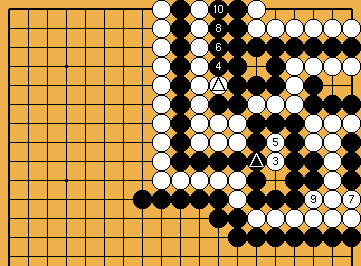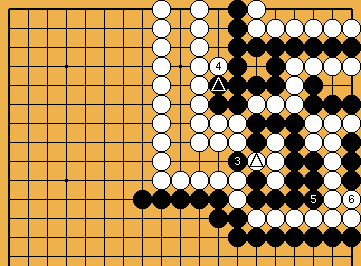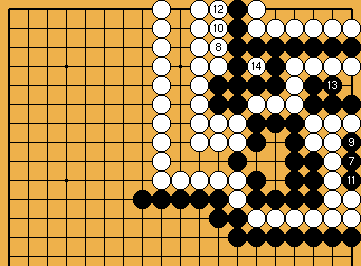The Further Evolution of Amateurs' Knowledge
(2011 - 2014)
2011 - Circular Hanezeki: a New Type of Seki
|
This diagram shows a simplified version of the half-board seki, which could arise after Harry's variation for |
|
Normally, a hanezeki involves five chains (the Black and White groups in the bottom right, the nakade stones This is the smallest, and simplest, Circular Hanezeki. Larger, and more complex, ones can be created by having more pairs of groups in seki (including with large eyes), more nakade stones |
|
White must not capture Black's group. After White captures Black's centre group and Black has recaptured, it takes Black two moves to fill White's eye ( |
|
Black must not capture White's three stones. After Black captures White's three stones, and White plays inside, it takes White two moves to fill Black's eye ( |
|
White must not occupy a shared liberty ( |
|
Black must not occupy a shared liberty ( |
|
...and White wins the semeai. If White's group in the lower right corner is very large, this could still benefit Black. |
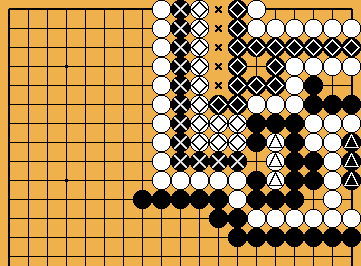
 38
38 in our solution (
in our solution ( -group has no eyes, and shares common liberties (
-group has no eyes, and shares common liberties ( , five here) with Black's
, five here) with Black's  -group, which has one eye. Neither side is able to reduce the shared liberties to four. The number of these shared liberties depends on the size of the nakade (
-group, which has one eye. Neither side is able to reduce the shared liberties to four. The number of these shared liberties depends on the size of the nakade (
 ) in the corner.
) in the corner. ). With the addition of the
). With the addition of the 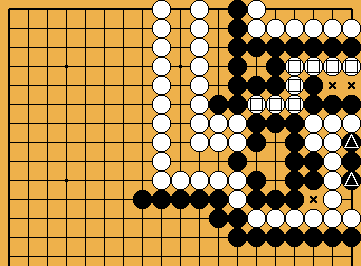
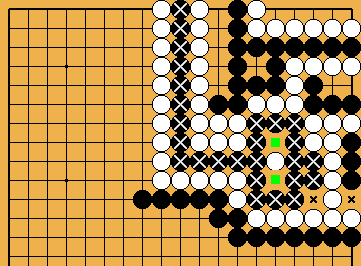
 ). She must occupy a further two liberties (
). She must occupy a further two liberties (